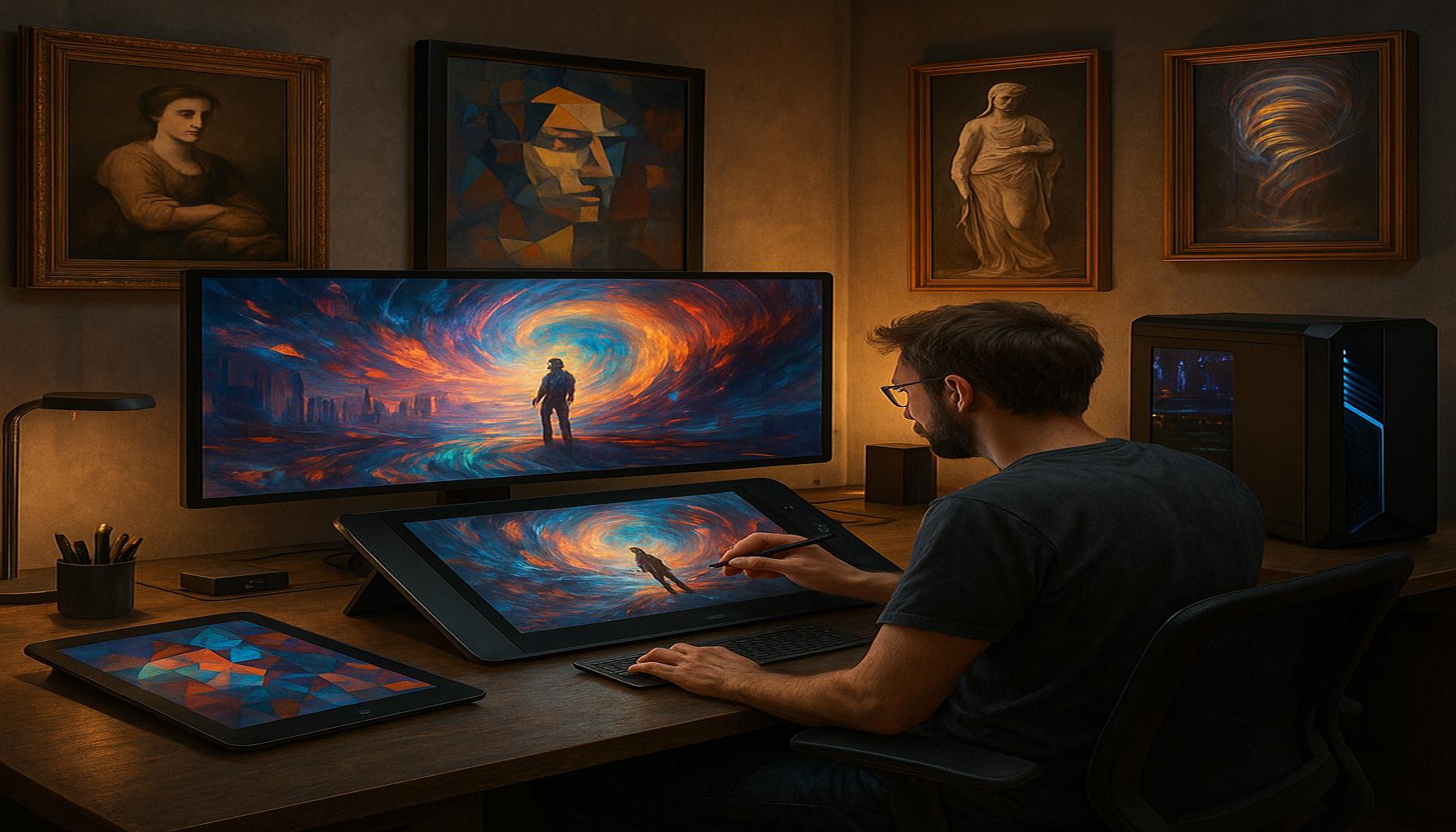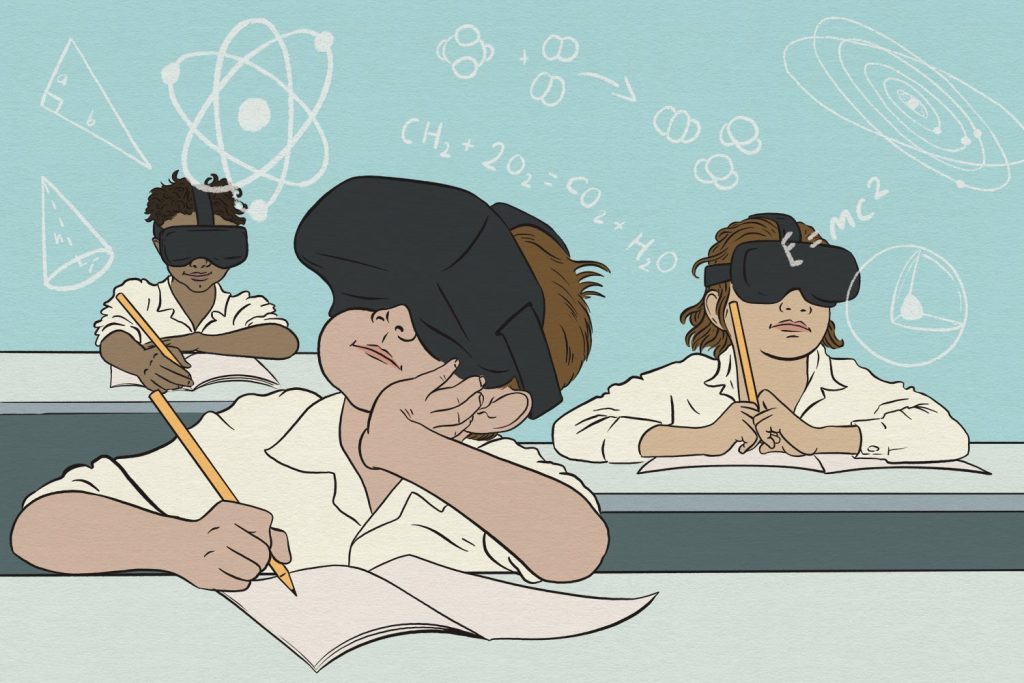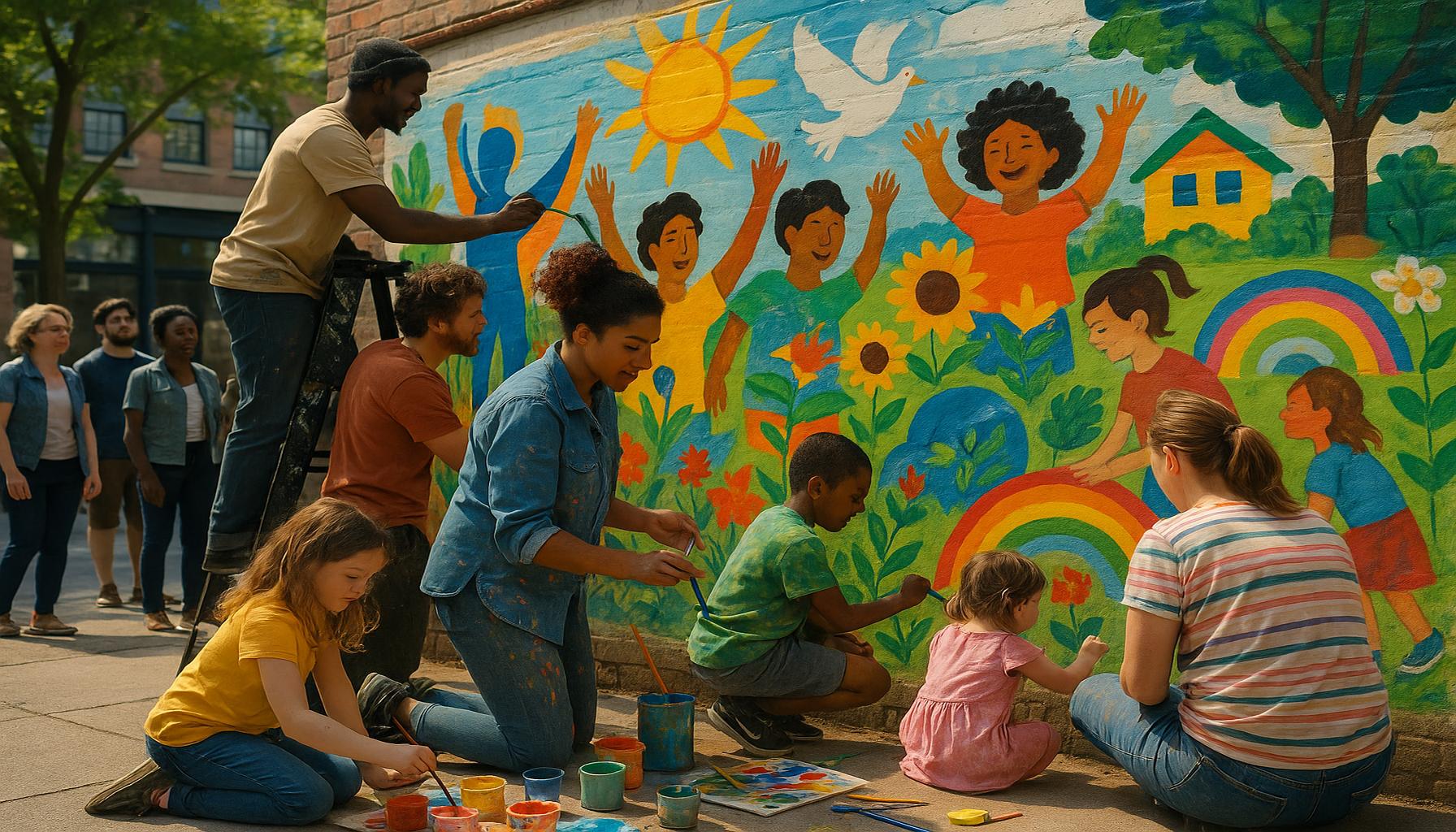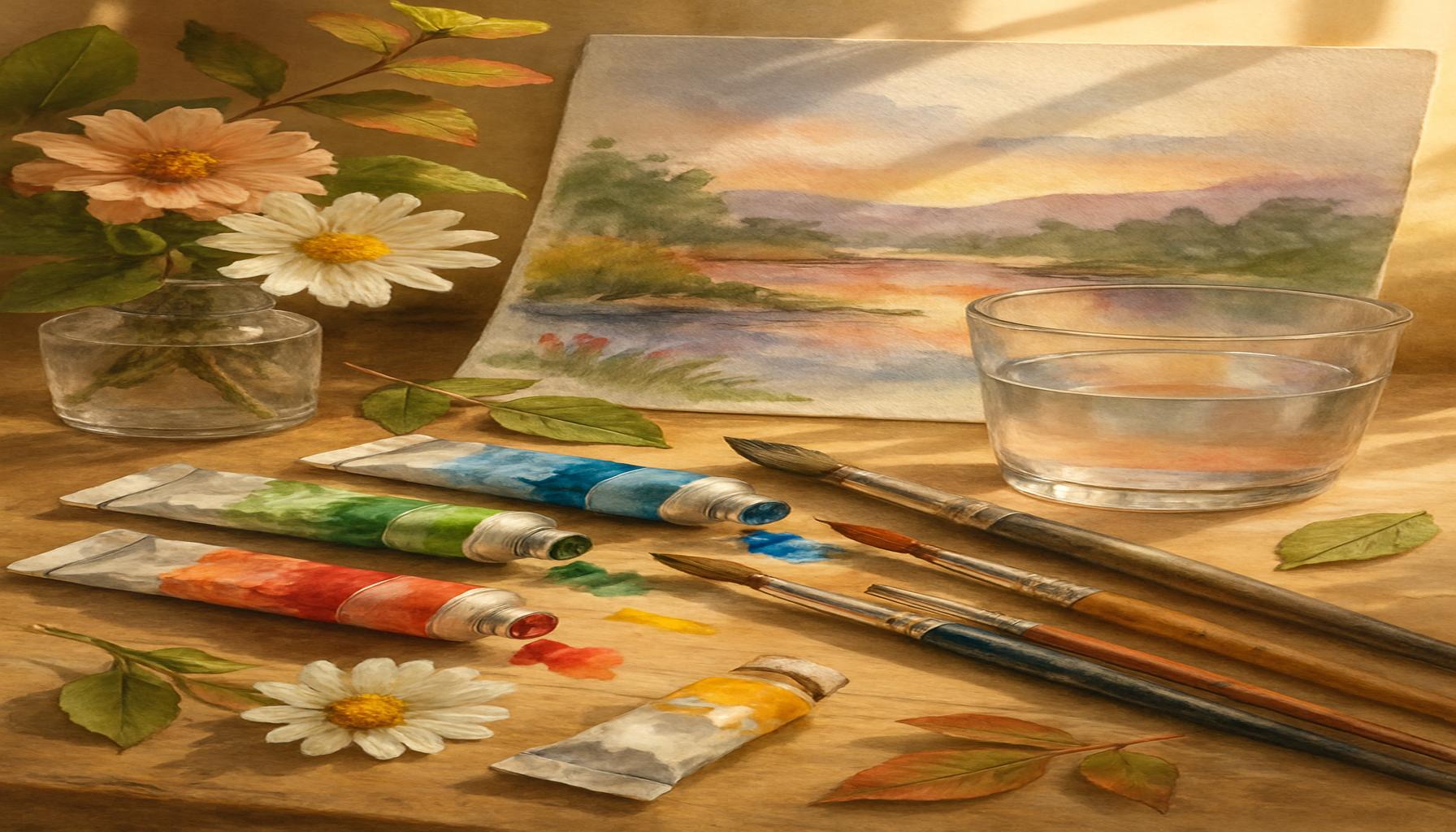The Evolution of Digital Art: How Technology is Transforming Creativity

The Evolution of Digital Art
As the digital landscape continues to evolve, the world of artistry is experiencing an unprecedented transformation. The fusion of technology and creativity is revolutionizing how artists express themselves and engage with audiences. Digital art, once a niche market, now stands as a dominant form of artistic expression influencing various sectors, including entertainment, advertising, and education.
One significant tool ushering in this new era is the graphic tablet. These sophisticated devices allow artists to draw directly onto a screen with stylus precision, mimicking the feel of traditional drawing instruments while incorporating the capabilities of digital tools. For instance, artists can edit their work on the fly, utilizing layers to refine their ideas without the mess of traditional mediums. Prominent artists like Kyle Webster have transformed their workflow through these tablets, creating intricate designs that would take hours on paper.
The Role of Software in Artistic Innovation
Complementing graphic tablets are powerful software programs, such as those found in Adobe Creative Suite. These applications bring advanced features for painting, photo editing, and video production to the fingertips of creators. Notable is Adobe Photoshop, which provides a comprehensive suite of tools for artists to manipulate and enhance their works. Additionally, software like Procreate has gained immense popularity among illustrators on the iPad, enabling a mobile yet powerful art experience.
Furthermore, the rise of 3D modeling software, such as Blender and Maya, is expanding horizons even further. Artists can create interactive installations and virtual environments that invite viewers to explore digital landscapes in captivating ways. This technology not only enhances traditional forms of storytelling but also ushers in a new age of experiences where art can transport people into different realities.
Engagement in a Digital World
The reach of art has broadened exponentially with online platforms like Instagram, Behance, and DeviantArt, where creators can showcase their work to a global audience. These platforms don’t just democratize access to art; they allow diverse voices and styles to flourish. For example, artists can gain recognition and fan bases from across the world, cancelling the constraints of geographical limitations. This accessibility fosters a sense of community among both artists and art lovers, facilitating collaborations and dialogues that were once unimaginable.

Advancements in artificial intelligence and augmented reality are another frontier in artistic expression. Today, artists can design installations that react to audience interactions, creating immersive experiences that engage viewers on a deeper level. Moreover, algorithm-driven art, where AI generates images or music, sparks discussions about authorship and the very essence of creativity. Notable projects, like the AI-generated portrait “Edmond de Belamy,” sold at auction for significant sums, show the blurred lines between human creativity and machine learning.
This digital renaissance invites both creators and consumers to rethink their engagement with art. As technology continues to advance, the artistic landscape will undoubtedly evolve, encouraging new forms of expression and interaction. The future of creativity lies in this ever-expanding intersection of art and technology, prompting us to consider how these innovations will shape our visual and sensory experiences in the years to come.
DISCOVER MORE: Click here to learn the art of storytelling
Tools of the Trade: Unleashing Creativity
The digital art revolution is powered by an array of innovative tools that enhance the creative process and broaden artistic possibilities. At the heart of this transformation are graphic tablets, which offer artists unprecedented control and precision. These devices have evolved significantly, with brands like Wacom leading the charge. Their latest models come equipped with high-resolution screens that respond to pressure sensitivity, allowing for brush strokes that mimic traditional pens, pencils, and paintbrushes. This seamless interaction between the artist’s hand and the digital canvas enhances the creative flow, enabling artists to experiment and push the boundaries of their imagination.
Alongside graphic tablets, software advancements have revolutionized the way art is created. Programs within Adobe Creative Suite, such as Photoshop and Illustrator, not only provide a vast toolkit for editing and designing but also foster a community of creators who share techniques and create stunning works collaboratively. The integration of plugins and filters allows artists to achieve nuanced styles and effects that are hard to replicate through traditional mediums. This adaptability is particularly appealing to artists who work across multiple genres, from graphic design to fine art.
Emerging Technologies Redefining Artistic Boundaries
Further pushing boundaries are emerging technologies like 3D modeling software. Applications such as Blender and Maya enable artists to design intricate three-dimensional works that can be animated or utilized in gaming environments, opening pathways for interactive storytelling. Such software not only allows for the creation of static images but also fosters dynamic experiences that can engage audiences in unprecedented ways. This capacity for immersive environments also plays a significant role in fields such as virtual reality (VR) and augmented reality (AR), where art can extend beyond mere observation to interact with viewers actively.
The impact of digital art extends into the realm of artificial intelligence. AI tools can analyze vast datasets, catering to artists’ creative output by suggesting themes or color palettes based on current trends. These advanced algorithms are not just tools; they enable artists to collaborate with technology itself, generating artworks that challenge traditional notions of authorship. For instance, AI-generated works like “Edmond de Belamy,” created by the Paris-based collective Obvious, generated significant attention at auction houses, prompting discussions on the role of human creativity in a world where machines can mimic artistic processes.
Access and Community: The New Art Ecosystem
The advent of online platforms has redefined how art is shared and consumed. Sites such as Instagram and DeviantArt function as global galleries, allowing artists from diverse backgrounds to showcase their work and connect with audiences instantaneously. This has democratized the art world, dismantling traditional barriers that previously dictated which artists could reach wider audiences. The power of social media also enables artists to gather feedback in real-time, facilitating a two-way interaction that fosters a sense of community.
- Global Accessibility: Artists can showcase their work worldwide, gaining recognition far beyond their local scenes.
- Collaboration Opportunities: The online space facilitates discussions, collaborations, and partnerships among artists.
- Diverse Communities: Various platforms host a myriad of styles and techniques, reflecting the rich diversity of contemporary art.
This evolving digital landscape emphasizes the interconnectedness of technology and creativity. As artists continue to experiment with these new tools and platforms, they are not merely adopting new methods; they are transforming the very essence of artistic expression itself. The exploration into how digital trends influence creativity poses exciting questions about the future of art, prompting audiences to consider how they engage with and appreciate artistic endeavors in the digital age.
| Advantage | Description |
|---|---|
| Accessibility | Emerging technologies make creating art accessible to everyone, regardless of skill level. |
| Interactivity | Digital mediums encourage viewer participation, transforming traditional static art into dynamic experiences. |
The evolution of digital art has seen profound shifts, largely influenced by advances in technology. One such impact is the enhanced accessibility provided by digital tools. These innovations enable aspiring artists to tap into a myriad of applications and platforms where they can easily create and share art. With tools like software programs geared towards beginners, the barrier to entry has dramatically lowered, allowing a more diverse array of voices and styles to flourish.Moreover, digital art fosters interactivity, offering a unique experience to audiences. Unlike traditional art forms, digital creations can encourage participation through interactive elements or multimedia integration. This transforms the relationship between artist and viewer, inviting them to engage with art in new and exciting ways. As technology continues to evolve, we can anticipate further innovations that will further expand the possibilities of creative expression in the digital realm.
DISCOVER MORE: Click here to dive deeper
The Influence of Digital Marketplaces on Artistic Value
As digital art continues to evolve, so does its economic landscape. The rise of digital marketplaces has created a new ecosystem where artists can sell their works directly to consumers without traditional galleries acting as intermediaries. Platforms like ArtStation, Etsy, and Foundation empower artists to establish their brands and monetize their digital creations efficiently. This direct-to-consumer model is reshaping how artists perceive the value of their work, allowing them to set prices based on their unique artistic vision rather than conforming to traditional market standards.
Moreover, the integration of non-fungible tokens (NFTs) has sparked a frenzy in digital art sales. Artists can tokenize their works—creating unique digital certificates of ownership that are recorded on the blockchain—allowing collectors to purchase one-of-a-kind items in the digital realm. This phenomenon was exemplified in March 2021 when the digital artist Beeple sold an NFT for a staggering $69 million at Christie’s auction house. Such events not only elevate the perception of digital art as a legitimate investment class but also challenge prevailing ideas about authenticity and provenance in the art world.
Educational Opportunities in Digital Art
The accessibility of distant learning platforms contributes significantly to the evolution of digital art. Artists can now enroll in online courses or access tutorials through platforms such as Skillshare, Udemy, and YouTube, allowing individuals to develop skills at their own pace. This democratization of art education ensures that aspiring artists have access to resources that were previously restricted to those who could afford formal schooling. In the United States, institutions like the School of Visual Arts and the Rhode Island School of Design have embraced online education, expanding their reach to budding creatives across the nation.
With the rise of educational content tailored for digital art, there’s a growing community of collaborative learners who share their journeys and techniques. Social media platforms and online forums create spaces for feedback and constructive criticism, allowing new artists to grow and refine their craft through shared experiences.
The Future of Digital Art: Fusion of Technology and Tradition
Looking ahead, the intersection of traditional artistry and digital technology appears promising. Artists are increasingly blending techniques from various mediums, such as painting and sculpture, with digital tools, resulting in hybrid forms of expression that challenge conventional categorizations. For instance, mixed media installations that incorporate digital projections, or traditional paintings that include interactive components, exemplify this evolving landscape.
As 5G connectivity and AR experiences become more widespread, the potential for enhanced audience engagement continues to grow. Artists might utilize real-time data, live feeds, or viewer interactions to create works that evolve as they are experienced, subverting the static nature of traditional art. The implications for gallery exhibitions, street art, and online showcases are monumental, offering both artists and viewers an enriched and transformative experience.
As technology continues to redefine creativity in the realm of digital art, the ongoing exploration of new tools, techniques, and economic models ensures that artists will continually innovate. The resulting artistry not only resonates with modern audiences but also captures the spirit of an age defined by digital connectivity and its limitless possibilities.
DISCOVER MORE: Click here for eco-friendly crafting ideas
Conclusion: A New Era for Creativity
The journey of digital art from niche experimentation to a mainstream powerhouse exemplifies the profound impact that technology has on creativity. As explored throughout this article, the rise of digital marketplaces has fundamentally altered the dynamics of the art economy, empowering artists to claim their value and foster direct relationships with consumers. The introduction of non-fungible tokens (NFTs) has further revolutionized ownership in the digital space, allowing artistic creations to achieve unprecedented financial acclaim while challenging our traditional notions of authenticity and value.
Moreover, the democratization of art education through online platforms has opened up a wealth of resources for emerging artists across the United States and beyond. This inclusive access nurtures a vibrant community of creatives who collaborate and share expertise, reinforcing the idea that innovation in content and technique is driven by collective engagement.
As we look to the future, the fusion of technology and traditional artistry is paving the way for hybrid expressions that defy classification, opening avenues for dynamic viewer interactions and captivating experiences. As the digital landscape continues to expand with advances like 5G connectivity and augmented reality, artists hold the potential to not just adapt, but to transform the very essence of artistic engagement.
In this thrilling era of creativity, the ongoing exploration of tools and techniques will undoubtedly lead to new artistic frontiers. The evolution of digital art serves as a powerful reminder that creativity knows no bounds and that the intersection of art and technology will continue to shape the way we perceive, create, and appreciate artistic expression in infinitely diverse forms.


